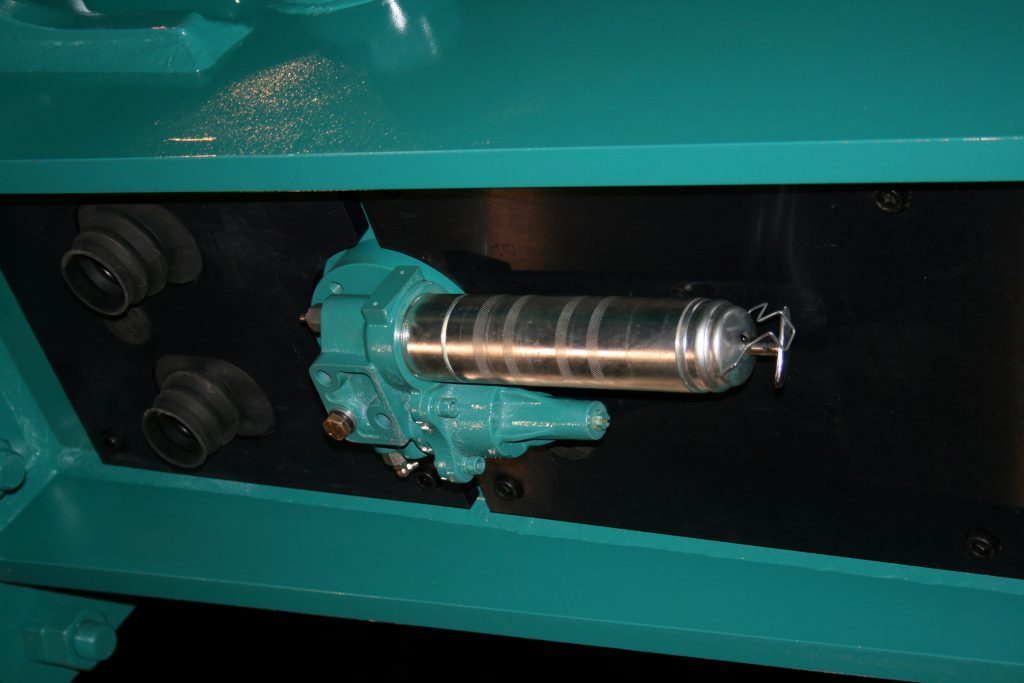
News
Heavy Equipment
Columns
Column: Lubrication of rock breakers in quarries
March 25, 2020 By Mike Deckert
 Tool-mounted automatic lubrication system. Photo: SKF Lubrication Business Unit
Tool-mounted automatic lubrication system. Photo: SKF Lubrication Business Unit Rock breakers, or hydraulic hammers, can be found in a wide variety of construction applications, including roadbuilding, demolition sites and quarries. Most quarry or aggregate operations include some type of crushing machine or function. Depending on the requirement of the operation and material being broken, rock breakers are seen on skid steers, excavators and on pedestal-mounted booms.
Mike Deckert, vice president of FLO Components is an active member of the faculty, board of directors and advisory committees for HDET (Heavy Duty Equipment Technician) and HDEO (Heavy Duty Equipment Operator) at Conestoga College and an instructor of the Lubrication School at Mohawk College. He shared some his knowledge of properly lubricating rock breakers:
Rock breakers can be one of the most versatile and adaptable tools within the heavy equipment world. Yet, just the fundamental nature of the act of crushing or breaking rocks, asphalt or concrete produces many possible issues and considerations to tend with on a daily basis. Proper maintenance and inspection of the breaker for example, is key to the longevity and operation of the unit and tool.
A key maintenance factor common to all breakers primarily is the requirement for the proper supply of grease, both in terms of volume and frequency, to the bushings mounted around the breaker tool. Operators should always refer to the OEM service manual for operation and maintenance guidelines for the specific rock breaker being used.
If grease is being applied to the breaker manually, a generally accepted good practice is that it be done after every 1-2 hours of continuous use of the breaker. Grease is pumped into the bushing until it is seen exiting between the tool and lower bushing. For rental units where the user is to manually lubricate the tool, the recommendation would be to grease the breaker every hour of operation.
Before manually applying any grease to the breaker, the following requirements should be implemented:
- Power must be removed so there is no chance that the breaker will operate and put the Operator/Mechanic in danger
- The breaker should be in a vertical position with weight or pressure being applied to force the tool up into the housing/bushings. This is to achieve proper distribution of grease to the bushings.
If the tool is not fully up into the breaker, there is a risk of the grease entering into the impact area, which can damage seals and allow the grease to enter into the hydraulic fluid.
In terms of the proper lubricant to use, again users should consult the specific OEM breaker specifications. A typical recommendation is the use of EP2 grease with a high dropping point (minimum 500 F, 260 C), which is the minimum temperature where, when heated, the oil within the grease starts to flow and break down. Another common recommendation you may encounter is to use “chisel paste” which has characteristics or formulation specific for breaker applications. Chisel paste for example, usually has a dropping point of 2000 F, 1093 C.
The alternative to applying grease to the breaker manually is using an Automatic Lubrication System designed specifically for rock breaker applications. There are two basic types of Automatic Lubrication Systems for breakers: “Machine Mounted” and “Tool Mounted”
A “Machine Mounted” breaker lube system is installed at either the machine’s chassis (e.g. excavator) or in the case of stationary booms located at crushers, on the boom pedestal. These systems incorporate a pump package designed specifically for chisel paste, and deliver the lubricant through a single line running down the entire length of the boom onto the breaker itself. They are typically electric-operated and run continuously, supplying small frequent amounts of lubricant into the bushing while the breaker tool is operating
As the name implies, a “Tool Mounted” breaker lube system is mounted directly onto the tool itself. This lubricator is connected into the hydraulic lines used to operate the breaker itself. When the rock breaker is activated, a small amount of hydraulic fluid/pressure is diverted to the lubricator, prompting it to deliver grease into the bushing area. The grease reservoir is smaller in size (usually standard grease cartridge capacity) than a “Machine Mounted” system, requiring more frequent refilling. Care must be taken when installing this type of lube system due to the harsh environment that this lubricator is required to operate within. Special guarding and vibration resistant mountings may be required. One thing to note is that some brands of “Tool Mounted” systems incorporate OEM grease cartridges specific to that brand of lube system.
The obvious advantage of using an Automatic Lubrication System, regardless of the type of system used, is that you no longer have to shut down the breaker every 1-2 hours of operation to apply grease. Other benefits include:
- Improved safety for maintenance and operating personnel
- More efficient cooling and lubrication of the bushings and tool
- Flushing or removal of contaminates and particles that are harmful to the bushings and components of the breaker as fresh grease is continuously pumped into the bushings
- Creation of a lubricant seal around the edge of the bushing preventing the ingression of water, dirt, dust, etc.
- Continuous lubrication of the breaker components while the tool is in operation provides more even and consistent lubricant film
When all is said and done, proper and consistent application of the lubricant into the breaker and tool can be one of the biggest factors in achieving a long service life for this important piece of equipment.
Print this page